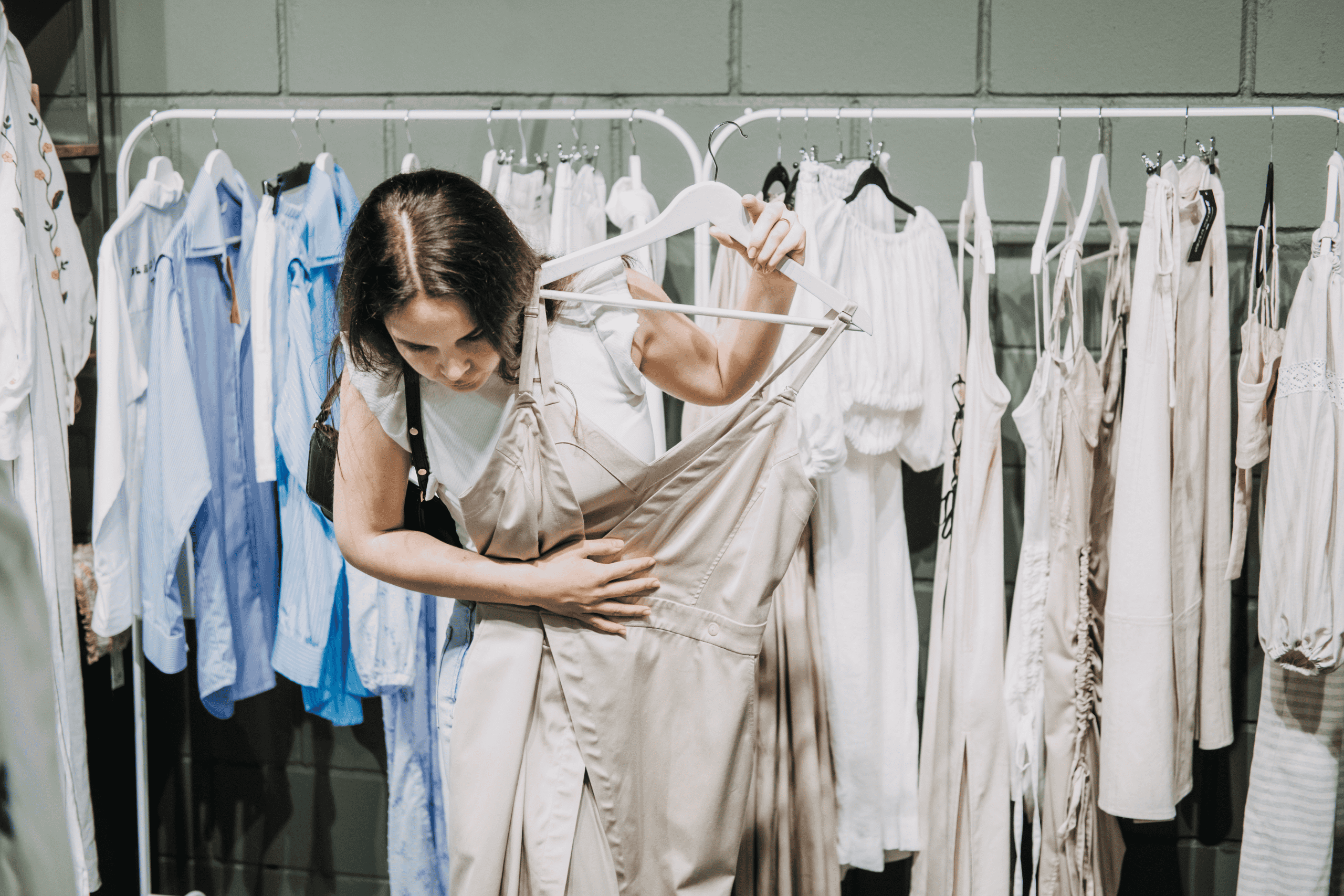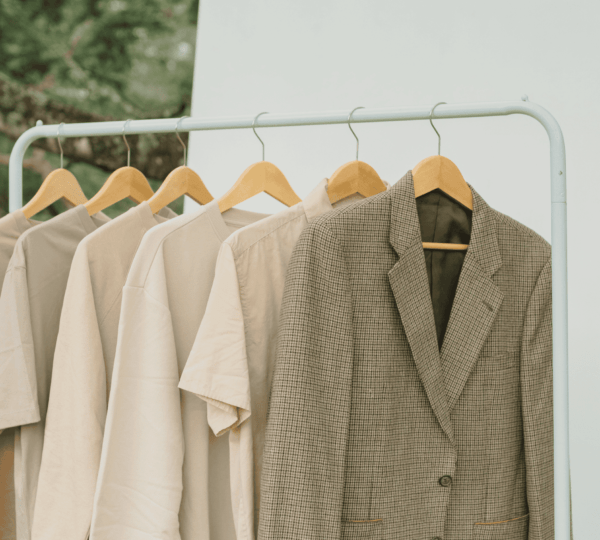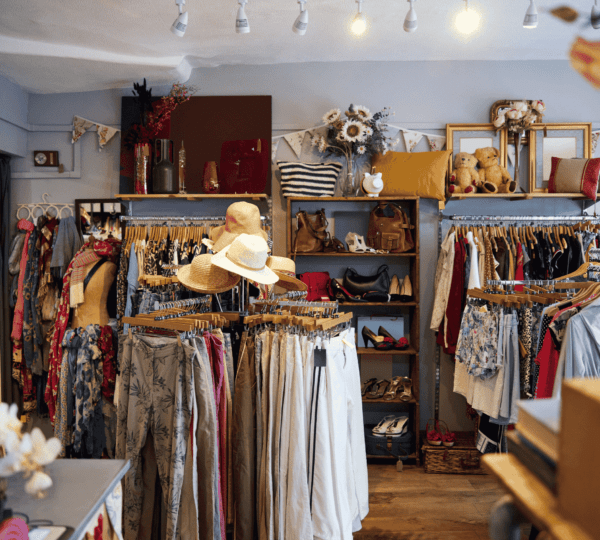
Sustainable Fashion Choices and Practices: A Guide to Mindful Shopping
Fast fashion thrives on trends that quickly come and go, fueling a consumer culture of constant buying and discarding. But what we often don’t see are the hidden costs behind the production of these inexpensive clothes. For instance, it takes about 2,700 liters of water to produce just one cotton t-shirt, which is enough drinking water for one person for two and a half years. Add to that the energy consumption involved in textile manufacturing and the chemicals used in dyeing fabrics, and it’s clear that the environmental footprint is enormous. Fast fashion brands also rely on synthetic materials like polyester, which are derived from fossil fuels and contribute to microplastic pollution when washed.
Additionally, fast fashion garments are typically not designed for longevity. The fabrics are often of lower quality, leading to quicker wear and tear, and the rapid turnaround of trends encourages consumers to toss out items in favor of the next new thing. This throwaway culture is why, according to the UNEP, nearly 85% of all textiles go to landfills each year.
Why Mindful Shopping Matters
Mindful shopping means making intentional, informed decisions about the clothes we buy and wear. It’s about moving away from impulse purchases driven by trends and instead opting for timeless pieces that will serve us for years. By being mindful about where and how we shop, we not only reduce the demand for fast fashion but also encourage more brands to adopt sustainable practices. Here’s why every small change can make a difference:
- Resource Conservation: Sustainable fashion practices like buying secondhand or opting for eco-friendly fabrics reduce the strain on natural resources like water, land, and fossil fuels.
- Reduction of Waste: When you buy fewer, higher-quality items, you’re less likely to throw them away after a season. This reduces the massive amounts of clothing that end up in landfills.
- Support for Ethical Labor Practices: By supporting ethical brands, you’re contributing to a system where workers are treated fairly, receive living wages, and work in safe conditions.
Building a Sustainable Wardrobe: Practical Steps
Transitioning to sustainable fashion doesn’t mean you need to overhaul your entire wardrobe overnight. It’s about making gradual, intentional changes that align with your values. Here are a few more practical steps to guide your journey toward a more eco-friendly wardrobe:
1. Shop With Purpose
Before making any purchase, ask yourself if the item truly fits your lifestyle and whether it will be worn frequently. Do you need another pair of jeans, or are you simply drawn to a fleeting trend? Being purposeful in your shopping reduces unnecessary buying and promotes a minimalist wardrobe.
2. Create a Capsule Wardrobe
A capsule wardrobe is a collection of essential clothing items that don’t go out of style and can be mixed and matched. The goal is to own fewer but more versatile and high-quality pieces. Start by identifying staple items you wear often and focus on pieces that can be styled in various ways, such as a classic white shirt, a well-fitted blazer, or a pair of quality jeans.
This not only helps reduce the temptation to buy new items for every occasion but also simplifies getting dressed. With fewer choices, it’s easier to create outfits, and you’ll be less likely to feel the need to shop as frequently.
How to Extend the Life of Your Clothes
The fashion industry’s environmental impact doesn’t stop once clothes are purchased. How we care for our clothes also affects their longevity and the environment. According to WRAP (Waste and Resources Action Programme), extending the life of clothing by nine extra months could reduce carbon, water, and waste footprints by about 20-30%.
1. Wash Smarter
Washing less frequently, using cold water, and line drying can not only save energy but also preserve the quality of your garments, making them last longer. Avoiding the dryer also helps reduce the shedding of microplastics from synthetic fabrics.
2. Repair Instead of Replace
Instead of discarding a shirt with a missing button or a sweater with a small hole, consider repairing it. Learning basic mending skills, like sewing buttons or patching small tears, can give your clothes a second life. Many local tailors or repair shops can also help with alterations or repairs.
3. Store Clothes Properly
Proper storage can prevent wear and tear. For example, use padded hangers for delicate items and store heavier knitwear folded to avoid stretching. Keeping your wardrobe organized can also remind you of what you already own, reducing the urge to buy more.
Exploring New Ways to Shop Sustainably
The landscape of fashion is evolving, and new ways of consuming clothes are emerging. Here are a few alternatives to traditional shopping that align with sustainable fashion values:
1. Clothing Rentals
Instead of buying a dress for a special event that you’ll only wear once, consider renting it. Clothing rental services have gained popularity as an eco-friendly way to enjoy new styles without the long-term commitment. Rental platforms often offer designer pieces at a fraction of the price, allowing you to experiment with fashion in a sustainable way.
2. Clothing Swaps
Organizing or participating in a clothing swap is a fun and social way to refresh your wardrobe without spending money or contributing to new clothing production. Invite friends or join local swap events where participants trade clothes they no longer wear. It’s a great way to declutter your wardrobe while finding new-to-you items that might be perfect for your style.
Debunking Common Myths About Sustainable Fashion
There are several misconceptions that can discourage people from embracing sustainable fashion, but it’s important to separate fact from fiction.
Myth 1: Sustainable Fashion is Too Expensive
While it’s true that some eco-friendly brands can have higher price tags due to ethical production and quality materials, sustainable fashion doesn’t have to break the bank. Thrifting, secondhand shopping, and clothing swaps are budget-friendly ways to build a sustainable wardrobe. Additionally, investing in higher-quality pieces may cost more upfront, but they last longer, saving you money in the long run.
Myth 2: Sustainable Fashion is Less Stylish
Sustainable fashion is about quality and thoughtfulness, but that doesn’t mean it sacrifices style. Many sustainable brands offer trendy, fashion-forward pieces that cater to all aesthetics, from minimalist to bold. In fact, by curating a capsule wardrobe, you can create timeless, versatile outfits that are always in style.
Myth 3: It’s Difficult to Find Sustainable Options
With the rise of ethical brands and secondhand platforms, finding sustainable fashion options has never been easier. A quick online search can reveal brands that prioritize sustainability, and there are plenty of apps and websites that make shopping secondhand a breeze. Plus, many mainstream retailers are starting to offer eco-conscious collections, making it easier to incorporate sustainable choices into your wardrobe.
Conclusion: Fashioning a Greener Future
The fashion industry is at a crossroads, and we, as consumers, have the power to influence its direction. By making small but meaningful changes—such as buying less, choosing quality over quantity, supporting ethical brands, and extending the life of our garments—we can help reduce the fashion industry’s environmental and social impact.
Mindful shopping isn’t just about looking good; it’s about feeling good knowing that your choices reflect your values. As we continue to shift toward more sustainable practices, we contribute to a future where fashion is kinder to the planet and the people who inhabit it. Let’s embrace fashion that not only makes us look stylish but also supports a healthier, more sustainable world.
End-of-Blog Post Citation:
- UNEP – Fashion Industry and Its Impact on the Environment.
- Ellen MacArthur Foundation – Make Fashion Circular.
- ThredUp – 2022 Resale Market Report.
- Clean Clothes Campaign – Living Wage and Labor Rights in Fashion.
- Global Fashion Agenda – 2023 Fashion CEO Agenda.












